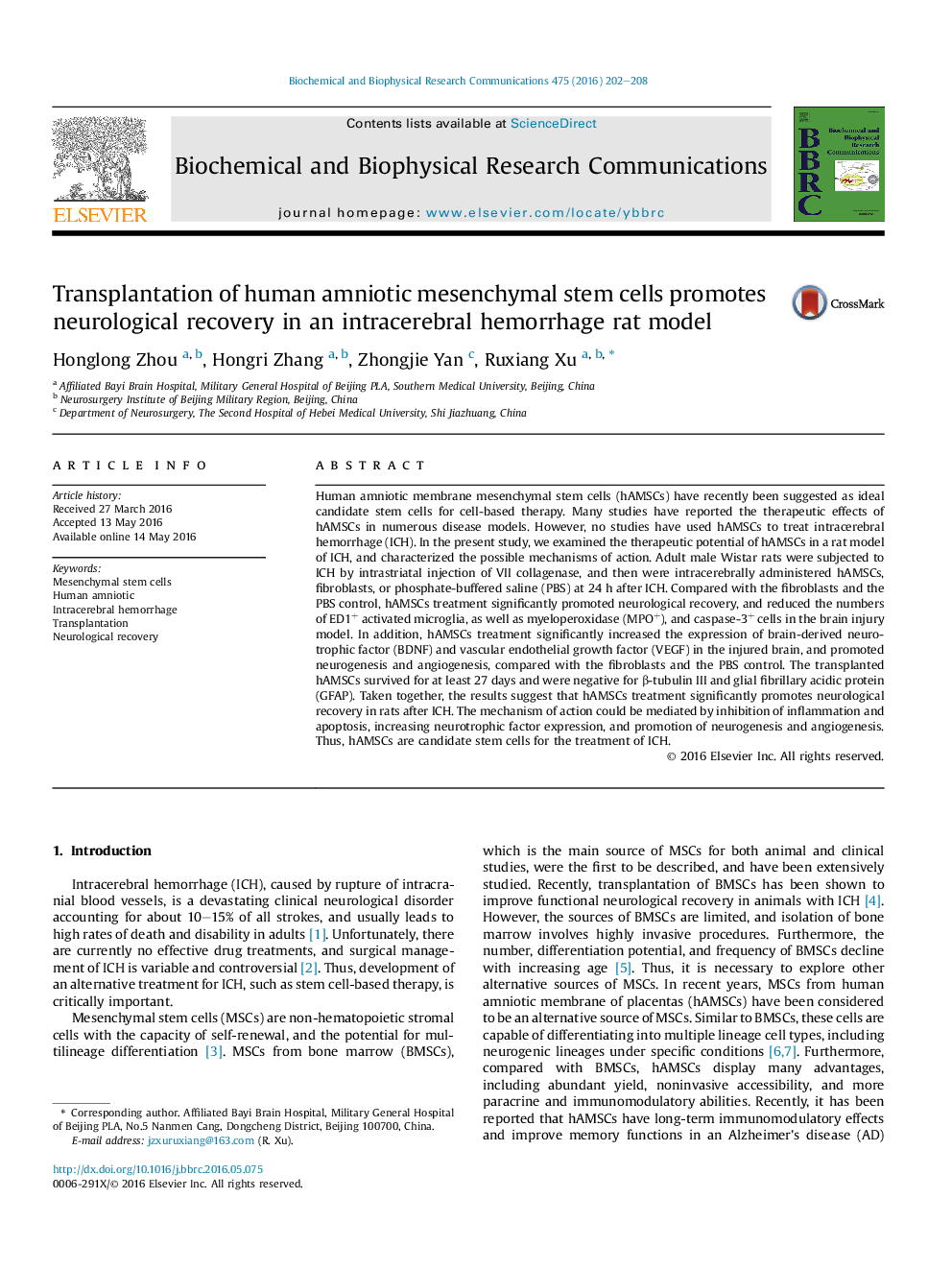| کد مقاله | کد نشریه | سال انتشار | مقاله انگلیسی | نسخه تمام متن |
|---|---|---|---|---|
| 1927832 | 1050262 | 2016 | 7 صفحه PDF | دانلود رایگان |
• hAMSCs treatment promoted neurological recovery in rats after ICH.
• hAMSCs treatment reduced inflammatory response and apoptosis.
• hAMSCs treatment increased the expression of BDNF and VEGF.
• hAMSCs treatment enhanced endogenous neurogenesis and angiogenesis.
Human amniotic membrane mesenchymal stem cells (hAMSCs) have recently been suggested as ideal candidate stem cells for cell-based therapy. Many studies have reported the therapeutic effects of hAMSCs in numerous disease models. However, no studies have used hAMSCs to treat intracerebral hemorrhage (ICH). In the present study, we examined the therapeutic potential of hAMSCs in a rat model of ICH, and characterized the possible mechanisms of action. Adult male Wistar rats were subjected to ICH by intrastriatal injection of VII collagenase, and then were intracerebrally administered hAMSCs, fibroblasts, or phosphate-buffered saline (PBS) at 24 h after ICH. Compared with the fibroblasts and the PBS control, hAMSCs treatment significantly promoted neurological recovery, and reduced the numbers of ED1+ activated microglia, as well as myeloperoxidase (MPO+), and caspase-3+ cells in the brain injury model. In addition, hAMSCs treatment significantly increased the expression of brain-derived neurotrophic factor (BDNF) and vascular endothelial growth factor (VEGF) in the injured brain, and promoted neurogenesis and angiogenesis, compared with the fibroblasts and the PBS control. The transplanted hAMSCs survived for at least 27 days and were negative for β-tubulin III and glial fibrillary acidic protein (GFAP). Taken together, the results suggest that hAMSCs treatment significantly promotes neurological recovery in rats after ICH. The mechanism of action could be mediated by inhibition of inflammation and apoptosis, increasing neurotrophic factor expression, and promotion of neurogenesis and angiogenesis. Thus, hAMSCs are candidate stem cells for the treatment of ICH.
Journal: Biochemical and Biophysical Research Communications - Volume 475, Issue 2, 24 June 2016, Pages 202–208
